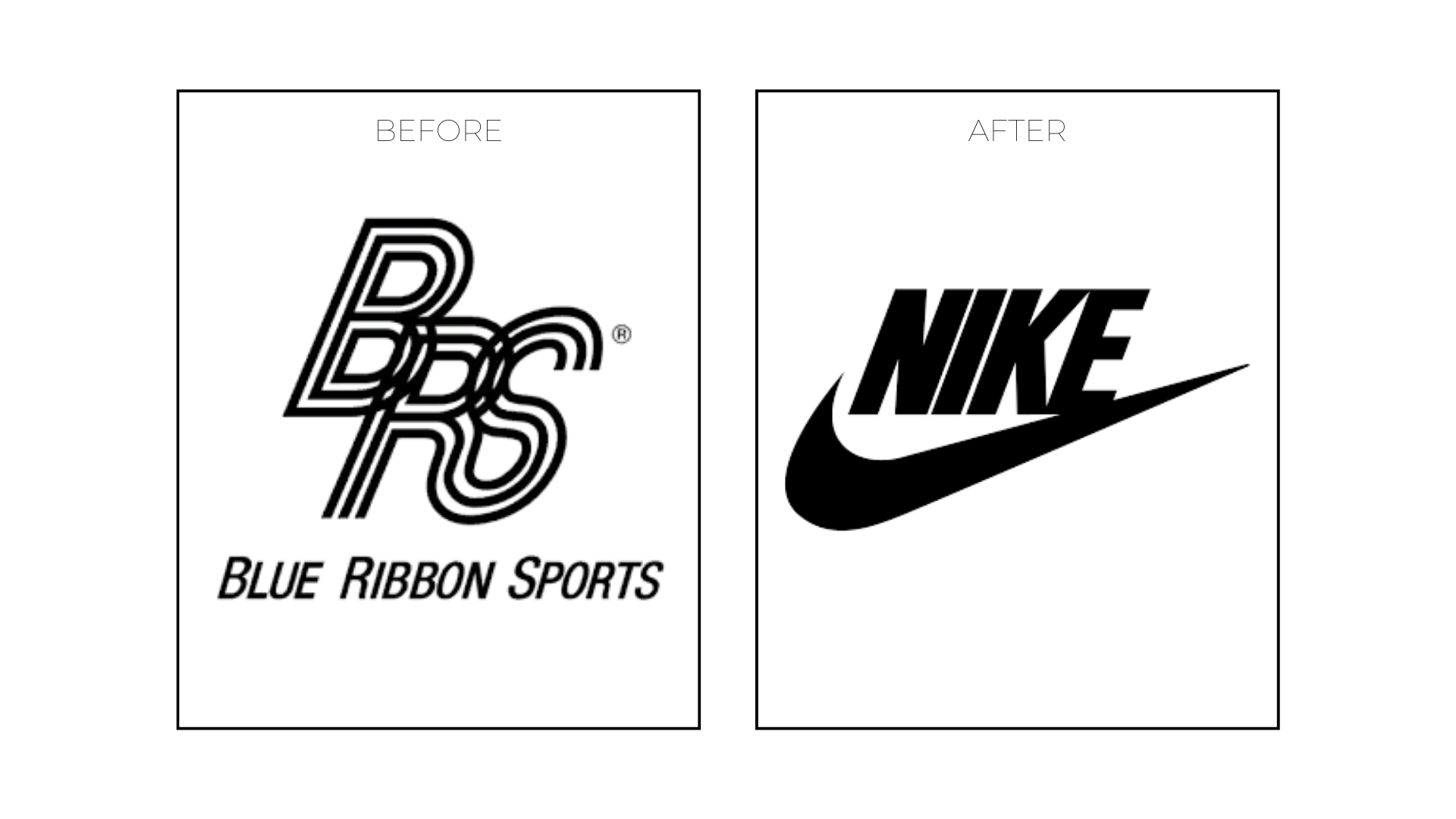The Art of the Rename: 12 Brands that ditched their names
Your brand’s name is a crucial piece of shaping consumer perception and driving business success. A well-chosen and memorable name can establish a strong brand identity, evoke emotions, and capture the essence of a company's values. However, the evolution of a brand's name is not uncommon, and many of the world's most recognized brands started their journeys with entirely different identities.
Many companies understand the importance of rebranding periodically, typically every 7 to 10 years. Research also shows that 74% of the S&P 100 companies have rebranded their business in the first seven years of operation.
Most brands also implement smaller brand refreshes in between major rebrands to elevate their visual identity and keep it up-to-date with evolving trends. Embracing change allows brands to stay competitive and resonate with their target audience in a dynamic marketplace.
Here are 12 examples of brands that underwent significant name changes. These transformations not only reflect the growth and adaptation of these companies but also provide valuable insights into the power of branding.
Google: Initially called "Backrub" when it was developed at Stanford University in 1996, the search engine was renamed "Google" in 1997.
2. Pepsi: Originally known as "Brad's Drink," it was created by Caleb Bradham in 1893 and later rebranded as "Pepsi-Cola" in 1898.
3. Nike: Originally named "Blue Ribbon Sports" when founded by Phil Knight and Bill Bowerman in 1964, it was renamed "Nike" in 1971.
4. Yahoo!: Originally called "Jerry and David's Guide to the World Wide Web," the internet company changed its name to "Yahoo!" in 1994. Yahoo is a literary reference from Gulliver’s Travels.
5. Canon: Established in 1937, the Japanese multinational corporation was originally named "Precision Optical Industry Co. Ltd." The company originally named its first cameras "Kwanon," inspired by the Buddhist goddess. It changed its name to "Canon" in 1947.
6. Adidas: Founded by Adolf Dassler in 1924, the company was initially named "Gebrüder Dassler Schuhfabrik" (Dassler Brothers Shoe Factory) and later rebranded as "Adidas" in 1949.
7. Twitter: When it was first launched in 2006, the microblogging platform was named "Twttr." The name was changed to "Twitter" a few months later.
8. Sony: Initially established as "Tokyo Telecommunications Engineering Corporation" in 1946, the company changed its name to "Sony Corporation" in 1958.
9. Best Buy: The electronics retailer was originally named "Sound of Music" when it was founded in 1966. It changed its name to "Best Buy" in 1983.
10. 7-Eleven: Originally known as "Tote'm" when it was founded in 1927, the convenience store chain changed its name to "7-Eleven" in 1946 to represent its extended operating hours from 7 a.m. to 11 p.m.
11. Marriott: The hospitality company was originally called "Hot Shoppes" when it was founded by J. Willard Marriott in 1927. It later adopted the name "Marriott Corporation" in 1967.
12. KFC: The fast-food chain was initially named "Sanders Court & Café" when it was started by Harland Sanders in 1930. It later rebranded as "Kentucky Fried Chicken" in 1952, and in 1991, it officially changed its name to "KFC."
The decision to change your brand name is a significant undertaking that requires thoughtful analysis and strategic planning. It's essential to recognize that a brand name is more than just a word; it embodies the identity and essence of your business. Before embarking on this transformative journey, several critical factors should be considered.
Understanding your brand's identity and how it resonates with your target audience is paramount. A successful name change should enhance your brand's positioning, reinforcing its values and aspirations. Extensive market research and analysis can provide valuable insights into consumer preferences and competitive trends, guiding you toward the most effective direction.
Moreover, preserving brand equity and recognition is crucial. A well-established brand may have built strong associations with its existing name, and a sudden change could potentially lead to confusion and disengagement among customers. Careful communication and inclusion of key stakeholders can help maintain brand loyalty and ensure a smoother transition.
Addressing legal and trademark considerations is another critical step. Protecting your brand's integrity and avoiding potential legal disputes is fundamental to safeguarding your reputation and market standing.
Ultimately, the success of a brand name change relies on a well-executed rebranding strategy. From internal alignment to customer feedback and testing, involving all stakeholders and incorporating their perspectives will foster support and ownership of the new brand identity.
While a brand name change can be a bold move toward evolution and growth, it demands careful planning, sufficient resources, and a comprehensive approach. With a clear vision and strategic execution, a thoughtfully chosen new brand name can be a catalyst for success in a dynamic and competitive marketplace.
Are you in need of a brand refresh? Download our free brand planner workbook for a detailed guide to building an impactful logo and brand identity.
Does your branding need some help? We would love to help you design and build your brand identity. Get in touch with us today by clicking the button below.












